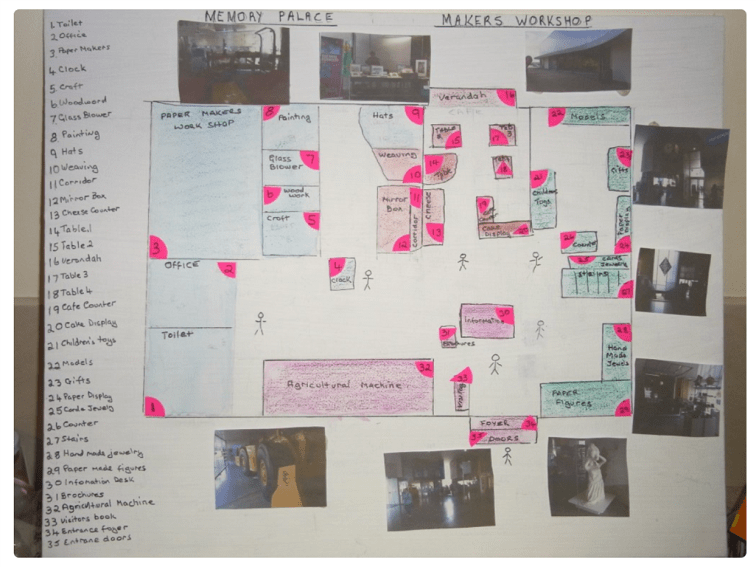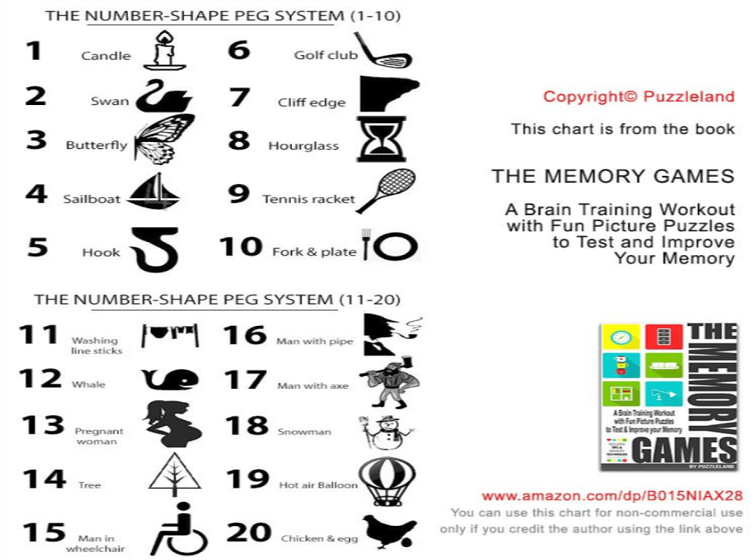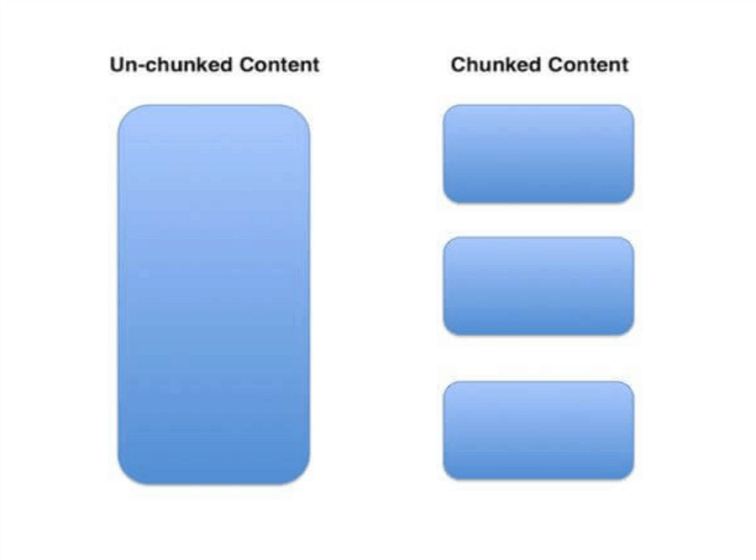All you need is the right memorization techniques to make the most of your memory. The human brain is fascinating. More specifically, the vast interconnections within our mind. Mendel Kaelen compares the human brain to a hill covered in snow, The intent of Kaelen’s discussion is to think of new ways to temporarily flatten the snow. Kaelen remarked, The idea here is to temporarily rewire your brain, or as Michael Pollan remarked in How to Change Your Mind, So, how can we rewire our brain allowing deeply worn connections to disappear and new connections to form? The answer is quite simple. We must change the way we store information in our mind.
Let’s examine 5 specific memorization techniques that will change the way you think and remember information.
1. Build a Memory Palace
What is it?
The method of loci[1] (aka memory palace) is a method of memory enhancement using visualizations with the use of spatial memory. It uses familiar information about your environment to quickly recall information. It is a method that was discussed by Cicero in an ancient dialogue called De Oratore.
How to use it?
Ron White discusses in How to Memorize Fast and Easily: Build a Memory Palace, that it’s essentially a room or building that you have memorized and you use locations in the room to store data. Ron informs us,
Example
An easy 5-step example, in the form of a Wiki, can be found at Artofmemory.com. Let’s examine the the steps:
Step 1. Choose a place that you know well. For example, your house or office. Step 2. Plan the route and pick specific locations in your route. For example, your front door, bathroom kitchen, etc. Step 3. Decide what you want to memorize. For example, geography, list of items, answers for a test, etc. Step 4. Place one or two items, with a mental image, and place them in your memory palace. Exaggerate your images. For example, use nudity or crazy images forcing it to stick in your mind. Step 5. Make the image into a mnemonic.
You can learn more about this technique here: How to Build a Memory Palace to Remember More of Everything
2. Mnemonic
What is it?
A mnemonic is a memory device that aids in retention and/or retrieval of information. Mnemonic systems are techniques consciously used to improve memory by helping us use information already stored in long-term memory to make memorization easier.[2]
How to use it?
Mnemonics make use of retrieval cues to encode information in our brain allowing for efficient storage and retrieval of the information. The trick is to learn how to easily create mnemonics. If you find that you struggle with creating your own, try the following website: Mnemonic Generator.
Example
I recently came across a video using mnemonics to memorize countries. Memorizing Countries using Mnemonics is a video created as an introduction to a class for using memory techniques to learn the names of countries on maps. I actively search for videos that provide enormous educational value, yet receive very little exposure. At the time of this writing, this video has received less than 4k views. Let’s examine the video. Goal: Create a mnemonic to memorize the countries in the Caribbean (just the countries you need to learn). Step 1. Looking at a map – write out each country (for which five were chosen). Cuba, Jamaica, Haiti, Dominican Republic, Puerto Rico. Step 2. Write the first letter of each country vertically. C J H D P Step 3. Create a sentence or phrase. Cubs Just Hate Doing Push-ups Cubs just hate doing push-ups. (Cuba Jamaica Haiti Dominican Republic Puerto Rico)
3. Mnemonic Peg System
What is it?
According to Artofmemory.com, a mnemonic peg system is a technique for memorizing lists and it works by memorizing a list of words that are easy to associate with the numbers they represent.[3] These objects are the pegs of the system.
How to use it?
The trick is to create a Number Rhyme System with each number having a rhyming mnemonic keyword.
Example
Let’s look at an example of a Number Rhyme System:[4] 0 = hero 1 = gun 2 = shoe 3 = tree 4 = door 5 = hive 6 = sticks 7 = heaven 8 = gate 9 = line Another technique like the Peg system is the Number Shape System.[5] Here you are assigning mnemonic images based on the shape of the number. Watch the following video for an example of this system: Number Shape System for Memorizing Numbers.
4. Chunking
What is it?
Chunking is a way to remember large bits of information by chunking them into smaller pieces of information. We are more likely to then remember the information when we put the small pieces back together to see the entire picture.
How to use it?
In the video Chunking – A Learning Technique, we can see that there are several ways to chunk information.
Example
Let’s examine a simple example using a nine-digit number. Step 1. What is the number you are trying to remember? 081127882 Step 2. Cut the number into smaller pieces through chunking. 081 – 127 – 882 Let’s look at one more example from the same video.
5. Transfer of Learning
What is it?
Transfer of learning is a way to learn something in one area and apply it in another. Authors of Thinking at Every Desk, Derek and Laura Cabrera inform us about the transfer of learning,
How to use it?
There are two specific ways to use it:
Example
I provide a detailed step-by-step example for this technique in this article: Learn How to Learn: How to Understand and Connect Difficult Ideas Easily
The Bottom Line
The key to using the techniques discussed here is to remember that we must actively think about information. We cannot simply drill information into our brain through rote memorization. We must change the way we think about memorization. We must find a way to “shake the snow-globe” in our mind or flatten the snow so that we can create new learning paths. Or as Derek and Laura Cabrera point out, we must insert “Thinking” into the equation,
More About Enhancing Memories
13 Simple Memory Tricks To Help You Remember Anything Easily 11 Tactics on Increasing Brain Power, Memory, and Motivation Is Memory Enhancement Possible? 12 Ways That Actually Work
Featured photo credit: Nong Vang via unsplash.com





